Behind the scenes of the year’s most effective designs
We look behind the scenes of the winners in the DBA’s Design Effectiveness Awards, presenting the case-studies, facts and figures that won over the judges.
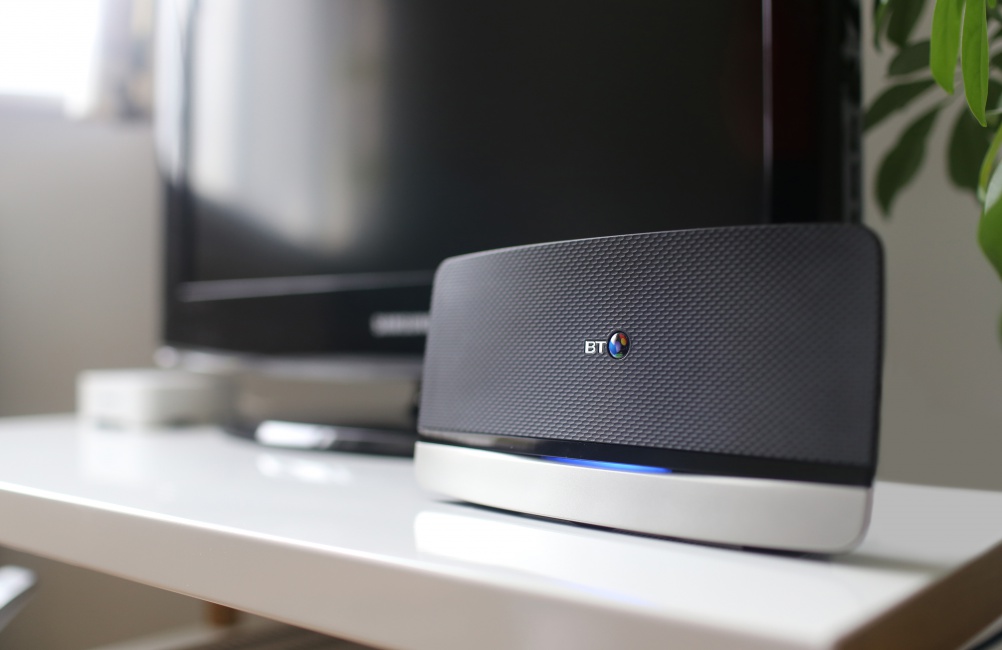
Last month the Design Business Association announced the winners of its 2015 Design Effectiveness Awards.
The BT Home Hub 5, designed by Alloy, won the Grand Prix Award, while the International Export Award, given for the most effective collaboration between a UK consultancy and an overseas client, went to 2LK for its design of Intel’s stand at the Consumer Electronics show.
We take an in-depth look at both these projects through their entry case-studies – presenting the facts and figures that convinced the DEA judging panel that these were the most effective design projects of the past year.
BT Home Hub 5 for BT, by Alloy. Winner of the Grand Prix Award
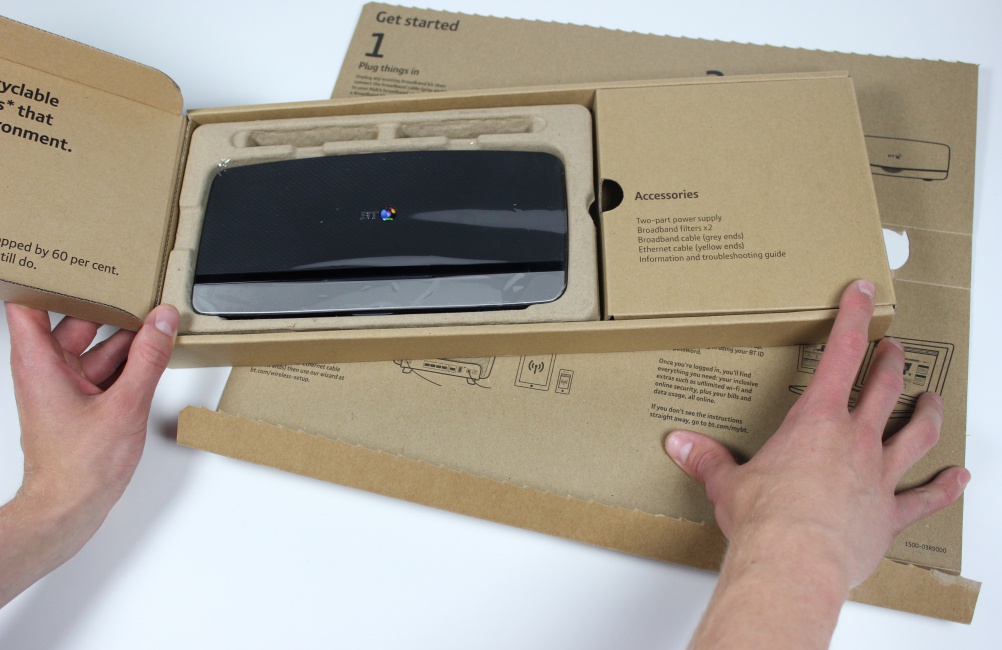
When BT undertook a customer experience audit of their Infinity Fibre Optic Broadband offer, it led to the development of the BT Hub 5 and some incredible results. The BT Home Hub 5 is an integrated VDSL modem and wireless router and is the core device used to connect customers to the BT fibre optic network.
With the device, the packaging, the installation and on-going use of the device and service all considered within the design process, the Hub 5 is a fantastic example of the value of an integrated, design-led approach to the development of better services and user experiences for a business.
Not only has BT seen service provision costs slashed and a superior experience delivered for their customers, the actual industrial design of the Hub 5, alongside advanced software, has helped reduce energy consumption by 30 per cent and is saving BT customers millions of pounds in reduced electricity costs per annum.
The BT business model is to post the Home Hub to the customer once the service agreement has been signed, but customers are not always at home for delivery, and this has led to poor customer experience and additional costs for BT. Traditionally, a visit from an engineer was also required to install an additional VDSL modem.
The new proposition eliminates the need for this separate modem and 30 per cent of customers no longer require an engineer for installation, substantially reducing the cost of connecting a new customer and making BT the only UK internet service provider to offer connection to a fibre network without an engineer visit.
What’s more, the device fits through a standard UK letterbox, removing customers’ frustration at undelivered packages, resulting in fewer calls to the customer service centres and saving BT 82,000 miles in distribution costs. No CD or paper installation instructions are required, reducing BT’s packaging costs and saving BT 147 tonnes of CO2 emissions per annum.
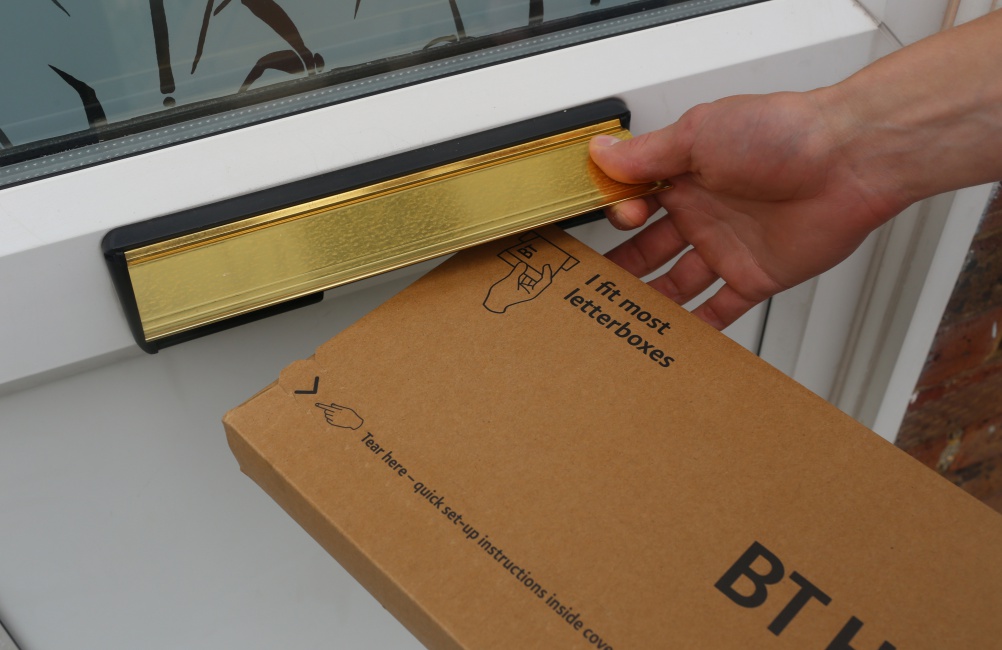
How did they do it?
Launched in January 2014, the design solution met all the requirements that the customer experience audit highlighted. The “windscreen” form and deployable feet were added to the design to provide stability and allow it to be sent in a package that can fit through a letterbox.
With the subtle arc of the Hub using a unique textual pattern, it has built on the BT Ergonomic Arc and Engaging Textures, both key elements of many BT devices. The packaging and supporting instructions integrate the core message of efficiency and speed, while a web-based installation process allows customers to use any wireless device to set up the Hub.
While it is hard to isolate the specific role of the design in driving market share owing to the complex nature of the market, it is possible to see that the integrated nature of the design, packaging and overall service has significant benefits. Between December 2012 and December 2013 BT gained 530,000 new subscribers and with growth rates expected to continue at a similar rate, it is very likely that BT will save millions in reduced service provision, manufacturing and distribution costs and reduce CO2 emissions by 13,147 tonnes per year.
The seamless experience of signing a contract and receiving a device a few days later, gives BT a significant advantage in the market place and has allowed them to produce an unparalleled service.

The judges said: “This was a project of huge scope and scale and is a credit to BT’s long term investment in design and to the teams involved. They really explored and considered the user experience, modelled the whole service from beginning to end, including the development of a superior delivery process. It’s a superb example of the phenomenal and wide-ranging results that can be achieved when design – thinking is integrated into a business.”
Intel Corporation at CES 2014, for Intel Corporation, by 2LK. Winner of the International Export Award
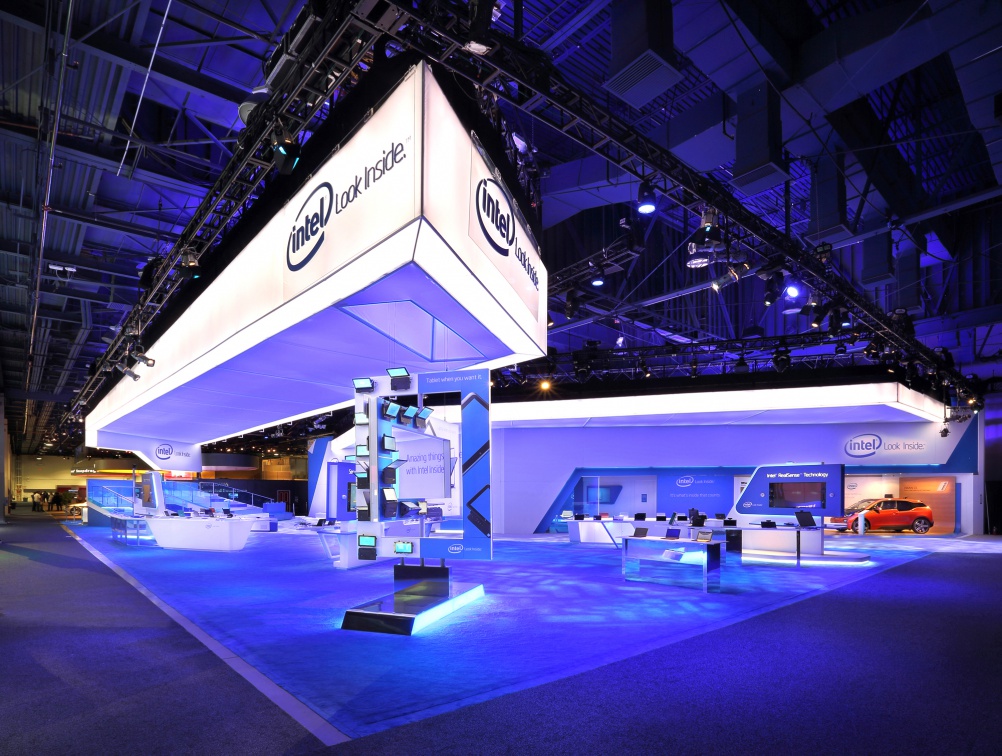
The 2014 Consumer Electronics Show (CES) presented Intel with an opportunity to inspire brand advocates and drive business growth. For Intel, the event represents the single biggest experiential marketing activity in the calendar and a huge financial investment – they needed to host an engaging exhibition experience to create an emotional connection with visitors, and the prominence of the design was imperative.
The new experiential concept in fact delivered such remarkable results it has since become a signature exhibiting “style” for Intel for the next two years.
The design was a complete success, with 80 per cent of visitors rating it as “excellent” or “very good” and 61 per cent listing it in the top five exhibits at the show. Forbes magazine declared that Intel stole the show and the stand generated remarkable online traffic, vastly exceeding results from previous years. Over 66,000 Twitter mentions and 415,400 Facebook actions highlighted a huge social media presence; one of the key currencies of modern day success.
How did they achieve this?
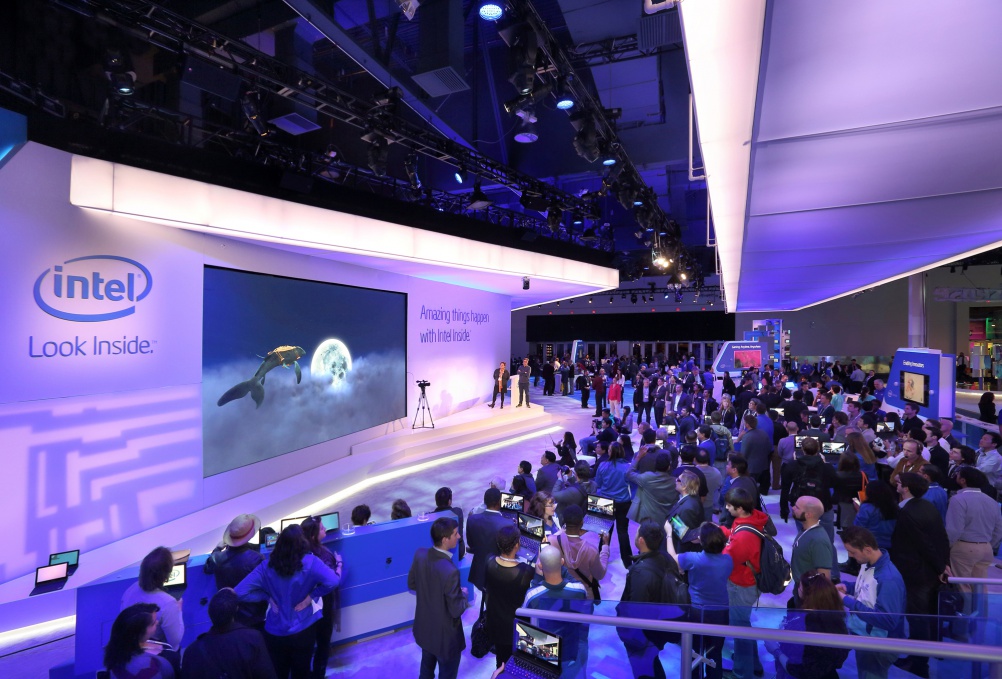
With the rise of social media and online news, many of the attendees at CES are better informed and harder to please than previous generations. Intel, the world’s foremost producer of microprocessors, had forged a powerful collaborative relationship with the design team. Together they set out to ensure the Intel stand not only put the latest technology in the hands of buyers but also de-cluttered the confusing mobile landscape.
Every touch point on a trade stand is an opportunity for engagement and inspiration. With this in mind, they created an active “circuit” to link the key feature areas of demonstration, display and storytelling. “The Helix”, a huge architectural statement wrapped around the stand space, was a single, angular spiral that greeted visitors and led them through the booth. With the structure above head height, it stood out in a crowded exhibition.
Positioned near the entrance, the extended booth experience was a first touch point, subconsciously attracting attendees. Attraction mixed with distraction was the key and the final destination at the end of the boulevard was the “Spotlight” theatre. This enormous focal performance space in the heart of the stand was a presentation area to promote meaningful storytelling to engage with visitors.
Visitors could gather on the tiered viewing terrace to watch performers, musicians, artists and scientists demonstrate how Intel technology enabled them to succeed in their field. This was not product preaching, but real and exciting stories to inspire.
Success at exhibition relies on creating brand ambassadors; high attendance alone means nothing without creating a positive impact and lasting impression. The Net Promoter Score (used to measure the relationship between brands and consumers, to gauge the “value” of customer relationships) among visitors at CES 2014 was truly incredible. An all-time high of +77 per cent was up from +58 per cent in the previous year and far exceeded the show average of +29 per cent.
More than 80,000 unique visitors came to the stand, a record 80 per cent of all CES attendees, and the average visitor “dwell time” was almost double the norm at 20 minutes. Added to this, 50 per cent of visitors recorded that they were “much more likely” to purchase as a result of their time on the stand.
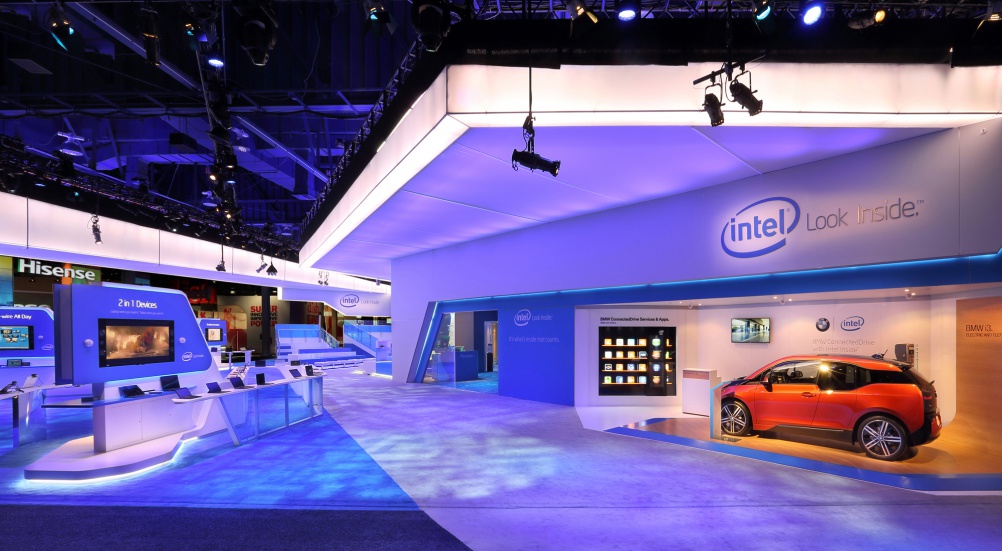
The judges said: “A great example of a connected consumer experience.”
You can see all the case studies from the 2015 Design Effectiveness Awards at www.effectivedesign.org.uk. The Call for Entries for the 2016 awards will be open in mid April 2015 and you can sign up for alerts here.
-
Post a comment




